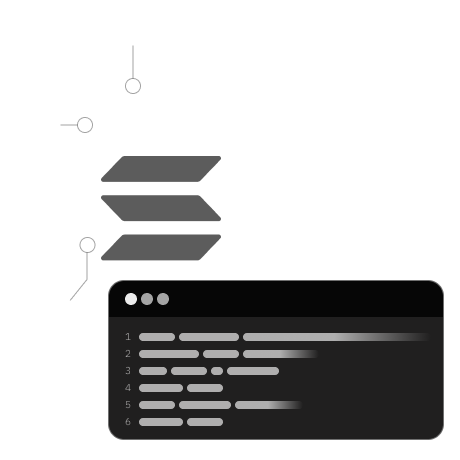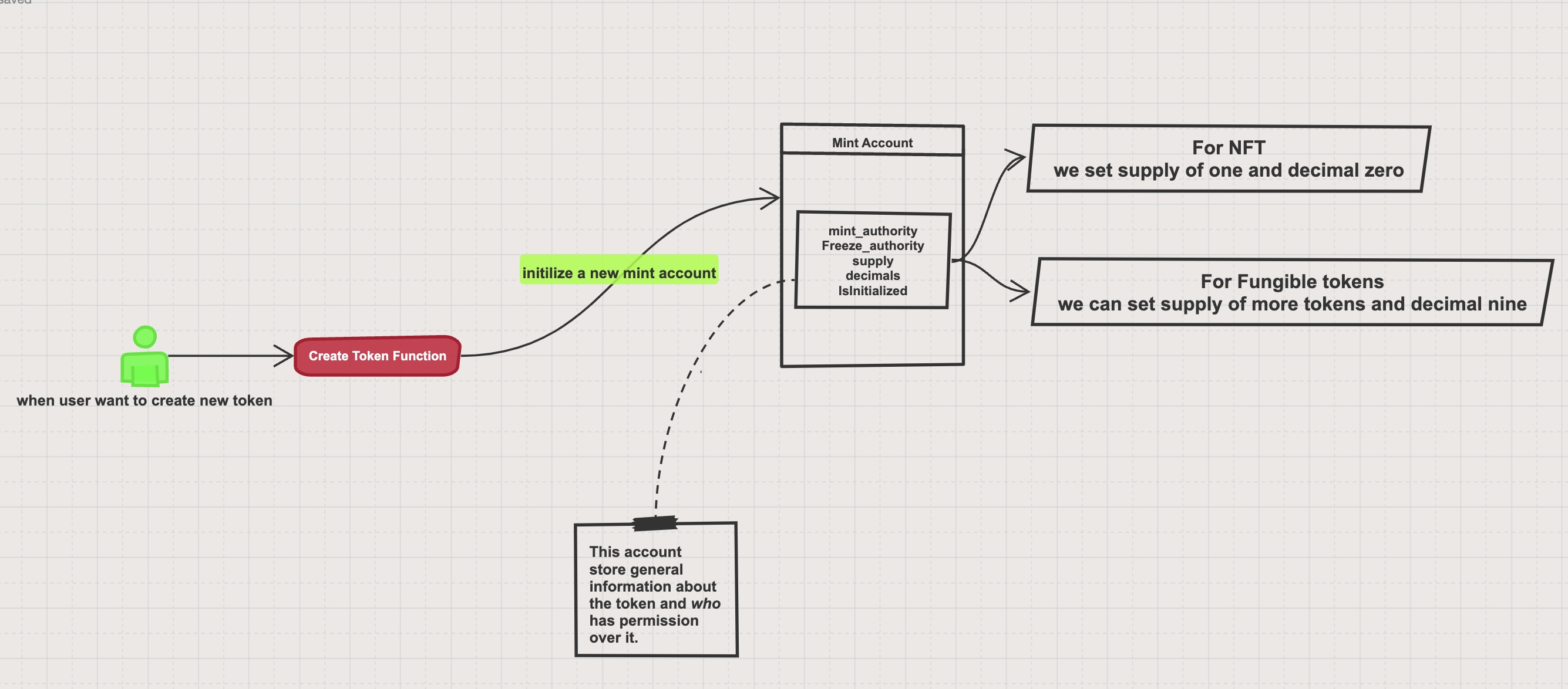
Embark on a detailed exploration of Solang, a tool that adapts Solidity for Solana, and understand its unique approaches to NFT minting and transfer. We'll cover crucial concepts including Mint and Token Accounts, Solang contracts, PDA derivation, and accessing account data.
Embark on a detailed exploration of Solang, a tool that adapts Solidity for Solana, and understand its unique approaches to NFT minting and transfer. We'll cover crucial concepts including Mint and Token Accounts, Solang contracts, PDA derivation, and accessing account data.
-
Mint Accounts: These are initialized when creating new tokens on Solana. They hold information like the mint authority (who can create more of this token), the freeze authority (who can freeze token accounts), the total supply, and the number of decimals.
-
Token Accounts: Each token account stores the tokens owned by a specific public key. These accounts are managed by the Token program and control access to the tokens through fields like owner, close authority, and delegate.
Here's an example of invoking the token program to mint tokens:

Solang alters Solidity's functionality to suit Solana's environment. Key differences include:
- Dual Account System: In Solana, a Solang contract uses two accounts - one for data storage and another for the executable code.
- Contract Upgrades: Solang's structure allows for updating the executable code while retaining the same data account, simplifying the upgrade process.
Program Derived Addresses (PDAs) are central to Solang's operation in Solana, especially for cross-program interactions. They are created using:
-
Seeds and Bumps: Seeds (such as strings or user public keys) and a bump value are combined to create PDAs. The bump is adjusted until a valid off-curve address is generated.
-
try_find_program_address Method: This Solang function returns the PDA and the seed bump. It's crucial to create addresses that programs can control.
In Solang, account data can be accessed in different ways:
-
Using Annotations in Constructors: Annotations are used to specify the payer, account size, seeds, and bump for PDAs. They can refer to constructor arguments and are essential for creating accounts on-chain.
-
Account Management: Solang provides functionalities to manage accounts within a contract, such as declaring and accessing them.
Understanding the concepts of space, seeds, payer, and bump is crucial in Solang Solidity, especially when working with Solana's blockchain. Here are the key points for each:
- Definition: Space refers to the amount of storage allocated for a Solana account.
- Usage in Solang: In Solang, the
@spaceannotation specifies the size of the data account for a contract. - Determining Size: The required space size can be estimated using Solang's verbose compilation output. It should at least cover the minimum bytes required by the contract.
- Role in PDAs: Seeds are used in generating Program Derived Addresses (PDAs). They are inputs combined with a program ID to create unique PDAs.
- Variability: Seeds can be static (like strings) or dynamic (like user public keys).
- Solang Implementation: In Solang, seeds are defined using the
@seedannotation in contract constructors or functions.
- Functionality: The payer is the Solana account responsible for paying the transaction fees and creating new accounts.
- Annotation in Solang: The
@payerannotation is used to specify which account will cover the transaction and storage costs. - Requirement: A payer is mandatory for account creation and transaction execution on Solana.
- Purpose: The bump is used to adjust the seed combination for generating a valid off-curve PDA.
- Process: Solang starts with a high bump value and iteratively decreases it until an off-curve address is found.
- Incorporation in Solang: The bump is often included in the seed array in the
try_find_program_addressfunction to ensure unique PDA generation.
-
Metadata Handling: In Solang, metadata objects describe SPL tokens, including essential information like names, symbols, and URI. These accounts are PDAs, created using specific seed formats.
-
Contract Annotations and Constructors: Solang uses special annotations for constructors, defining the space, seeds, payer, and bump. These annotations control the creation and management of accounts associated with a contract.
@program_id("Foo5mMfYo5RhRcWa4NZ2bwFn4Kdhe8rNK5jchxsKrivA")
contract Example {
@space(500 + 12)
@seed("ExampleSeed")
constructor(@seed bytes seed_val,@bump bytes1 bump_val) {
// ...
}
}
- Creating PDAs for Minting and Transferring NFTs: Utilizing the
try_find_program_addressfunction in Solang allows for the generation of PDAs, which are crucial for minting and transferring NFTs.
contract pda {
function create_pda(bytes seed2) public returns (address, bytes1) {
return try_find_program_address(["seed", seed2], program_id);
}
}
Understanding these aspects of Solang Solidity is key to developing effective NFT minting and transfer programs on Solana. Each element—from contract structure to PDA creation—plays a vital role in leveraging Solana's capabilities through Solidity.